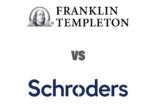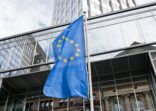For the full year 2016, the number of bond funds increased by 5.7% to 425. Assets also rose by 5% to $438.2bn.
Although equity funds dominate the industry in terms of number and assets, the asset class just saw a meagre increase of 0.4% in number, while assets were down by 2.8%.
Asset classes by number of funds

Source: SFC
Bond and equity funds together represent around 80% of Hong Kong’s fund management AUM.

Source: SFC
Hong Kong’s fund industry resembles what is happening in the region as a whole. According to Morningstar data, fixed income funds that are for sale in Asia represented the biggest net inflows in 2016 – at around $46bn, while equities saw the largest net outflows of around $53.3bn.
The data, which include funds made available for sale in Hong Kong, Singapore, Taiwan, Malaysia, Thailand, Indonesia, the Philippines and global cross border funds for sale in the region (such as Ucits), show that the three biggest inflows into fixed income are in global fixed income, high yield and emerging markets.
|
Asset class |
2014 flows (in $bn) |
2015 flows (in $bn) |
2016 flows (in $bn) |
|
Fixed income |
41.1 |
24.6 |
46.6 |
|
Global fixed income |
-4.7 |
5.8 |
21.4 |
|
High yield fixed income |
11.3 |
0.1 |
7.5 |
|
Emerging markets fixed income |
5.4 |
-6.7 |
5.9 |
Source: Morningstar
On the equities front, outflows were dragged down by funds focused on Europe and China.
|
Asset class |
2014 flows (in $bn) |
2015 flows (in $bn) |
2016 flows (in $bn) |
|
Equity |
25.3 |
28.9 |
-53.3 |
|
Europe Equity Large Cap |
21.8 |
28.0 |
-21.5 |
|
Greater China Equity |
0.5 |
-3.0 |
-7.9 |
|
Europe Equity Mid/Small Cap |
-2.0 |
6.3 |
-5.1 |
Source: Morningstar
Mixed equities outlook
Firms are split on where to allocate in equity markets.
Emerging markets, for example, are forecast to outperform other markets, according to J Safra Sarasin and Blackrock. Eastspring and Schroders are also positive on emerging markets as they see upward revisions of corporate earnings that point to earnings growth this year.
Bank of Singapore, however, had an opposing view on emerging markets, fearing that the group is vulnerable to potentially tough US trade policies. The bank also has a negative view on China and favours the US over the rest of the world despite expensive valuations.
State Street Global Advisors also favours the US and looks at those sectors that offer value, while it stays away from European equities due to risks that may arise from key upcoming elections.
Amundi, however, urges investors to stay away from US equities, which it believes are expensive. The firm prefers emerging market equities.
The one-year performance chart (ending February 17) of indices representing emerging markets, China, US, Europe and world equities.
The two key months to note are June, for the Brexit vote, and November, for the US presidential election.
Both the China and emerging markets indices outperformed the others right after the Brexit vote. However, both had steeper declines compared to the others after the US election, but have since recovered.
The European index underperformed all the other indices and had a very steep decline after the Brexit vote. Like the others, it also declined after the US elections, but has since recovered.
















